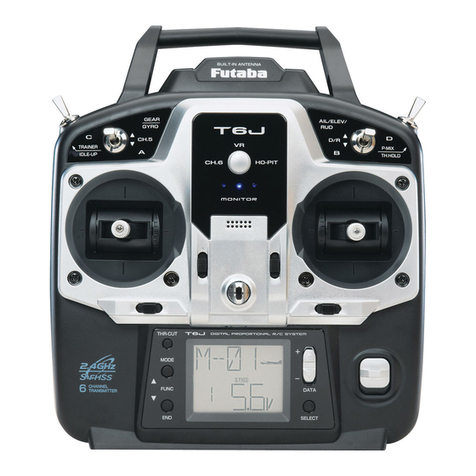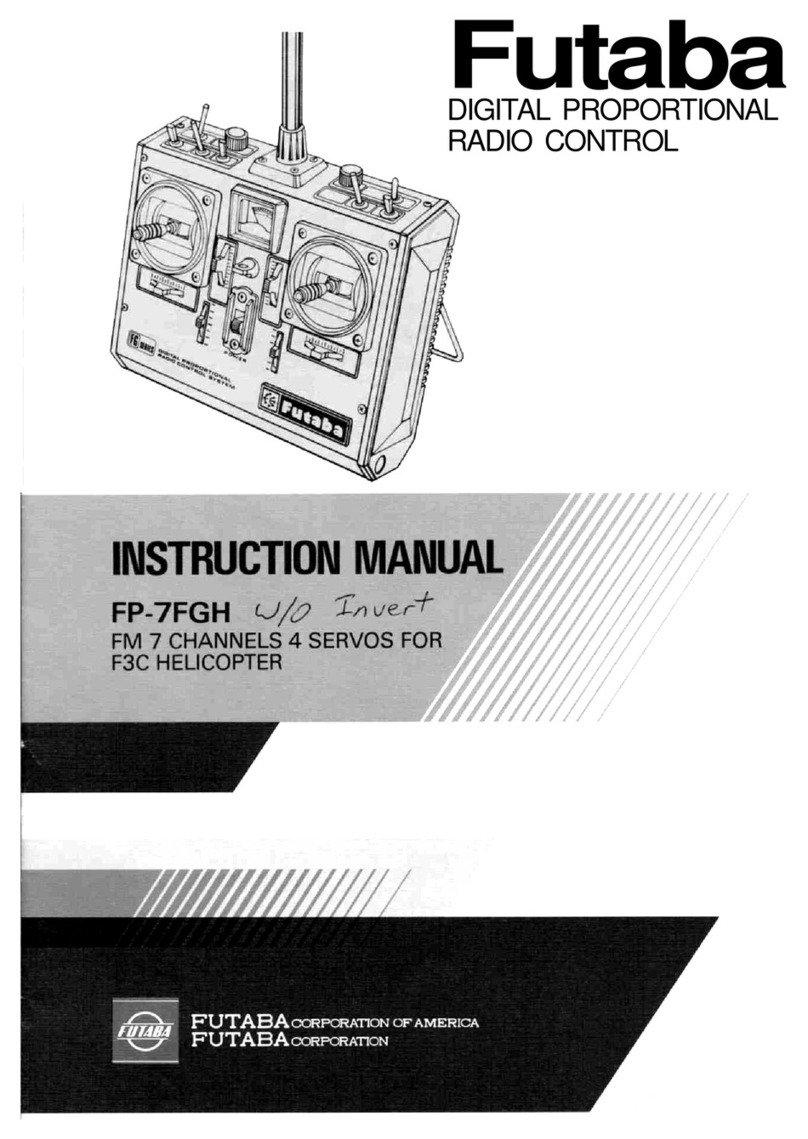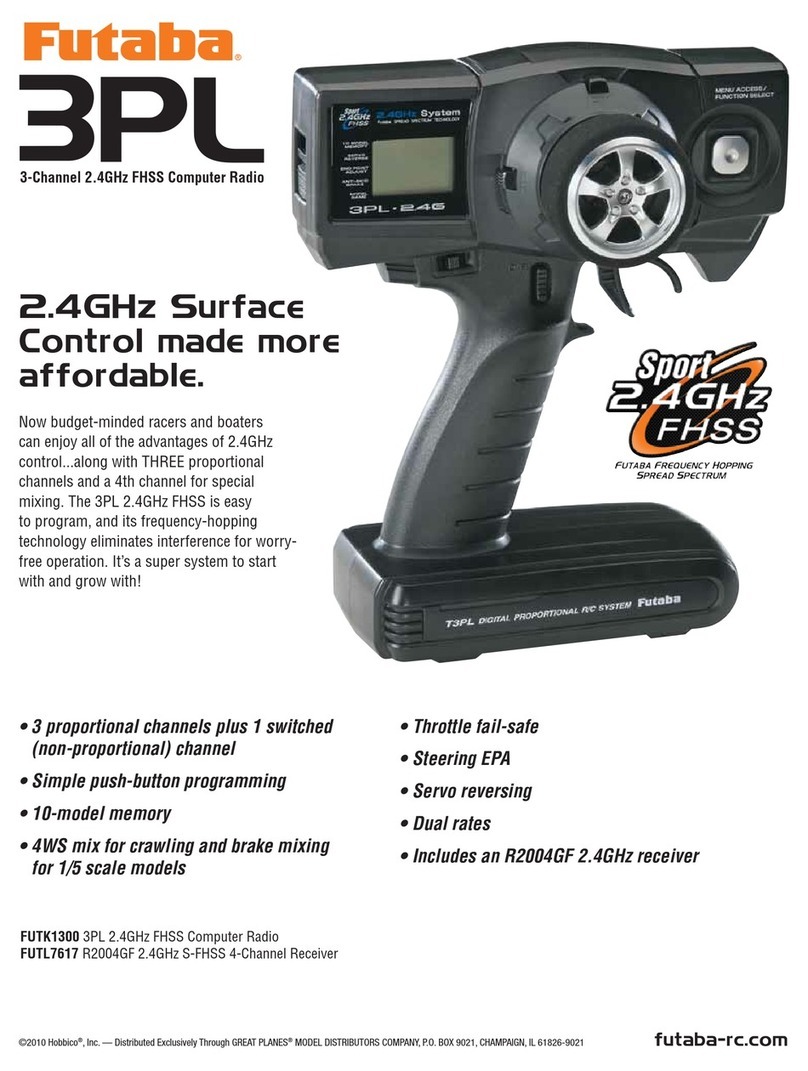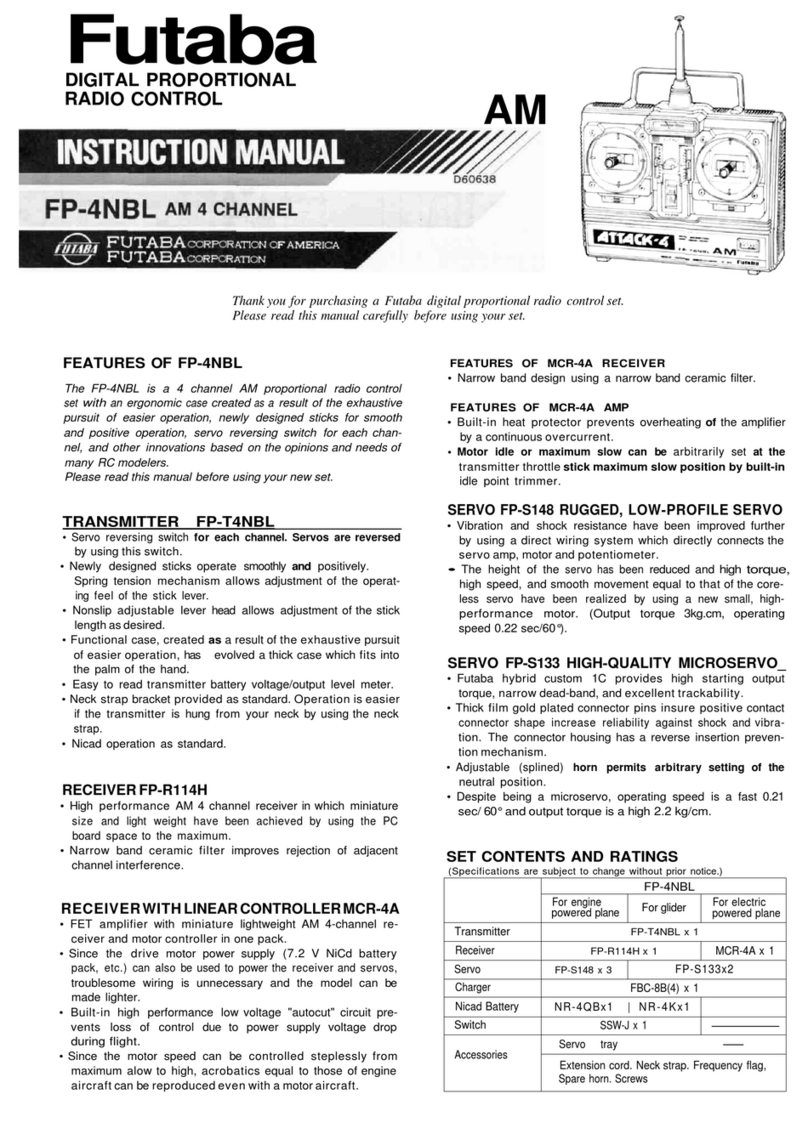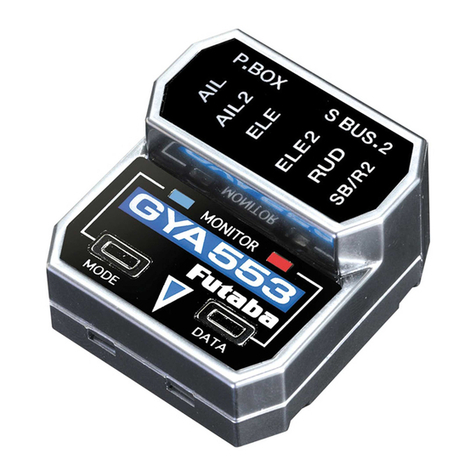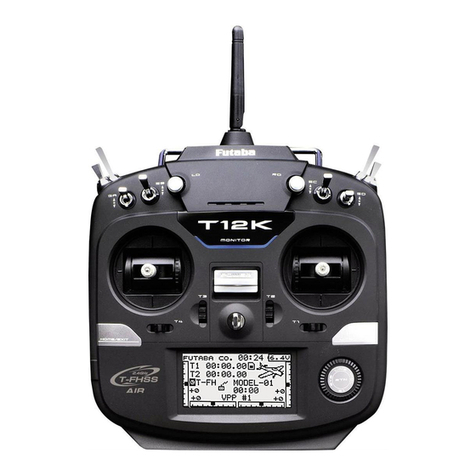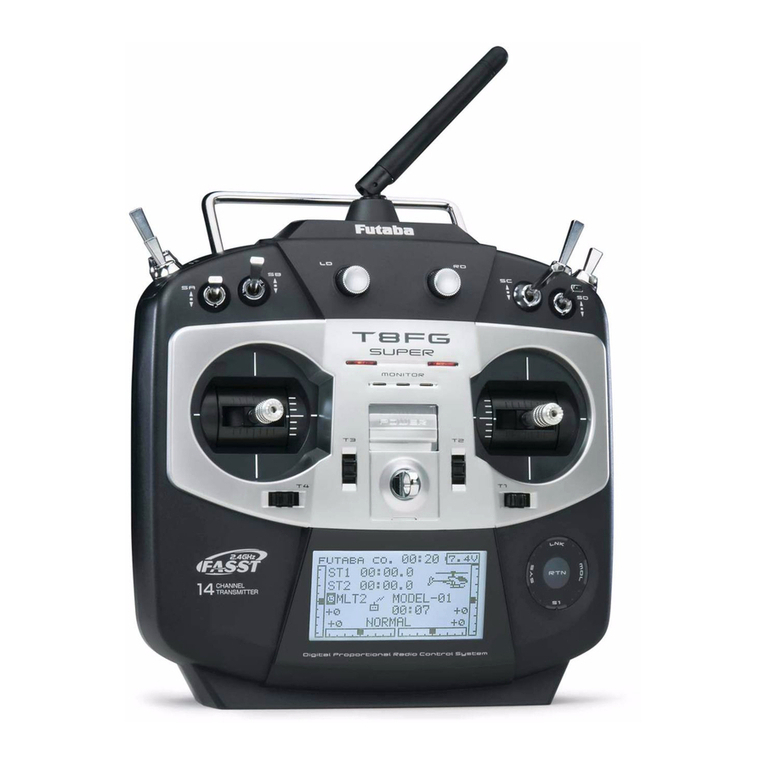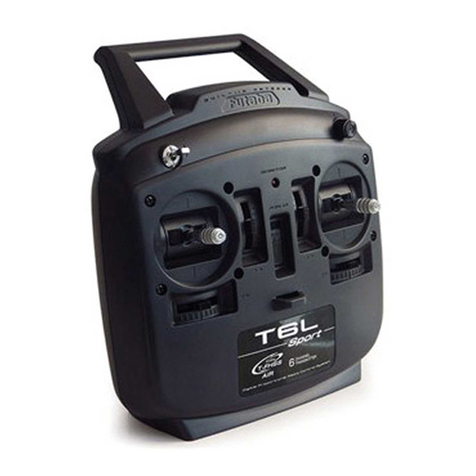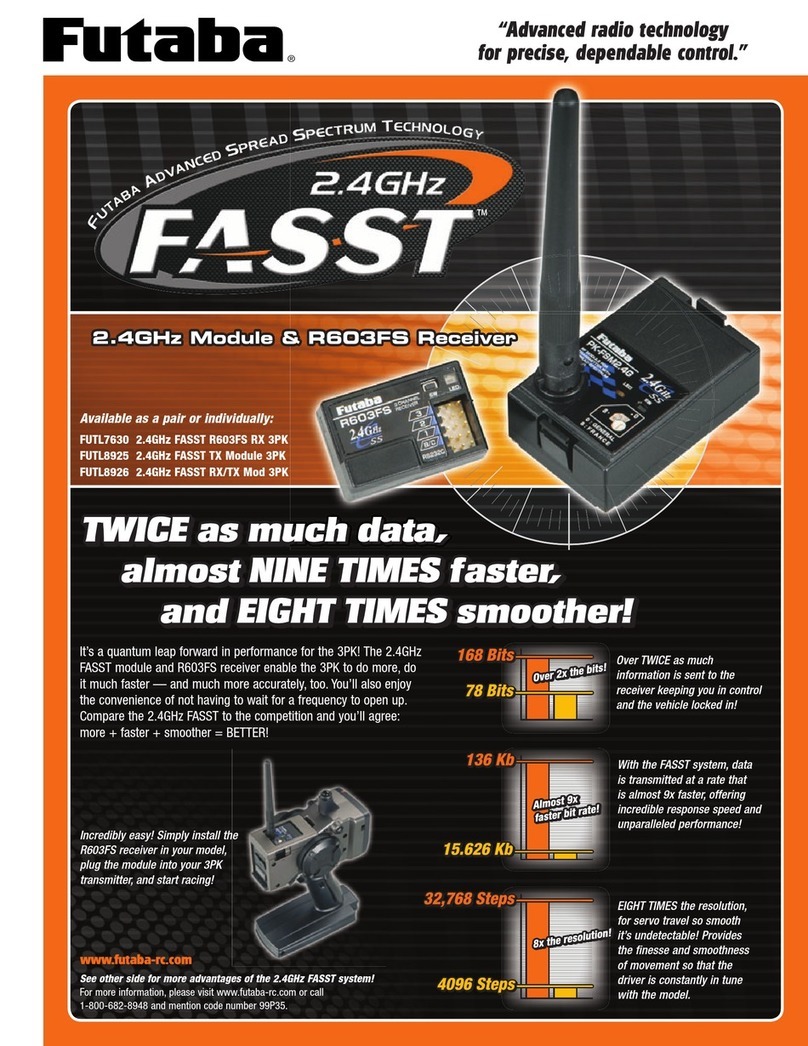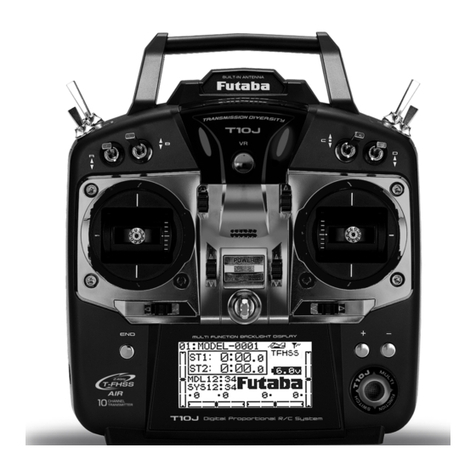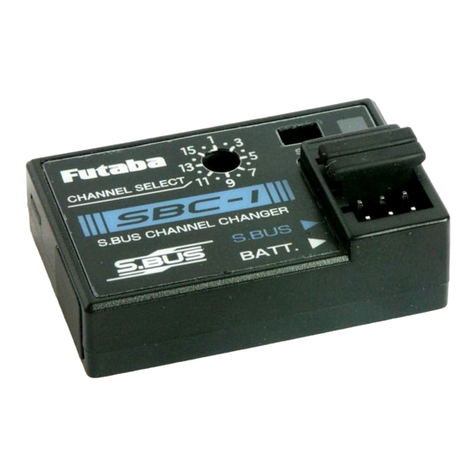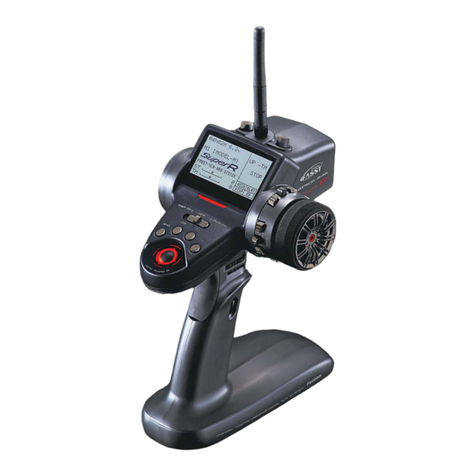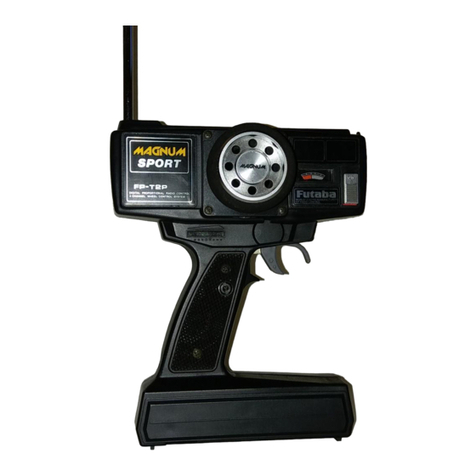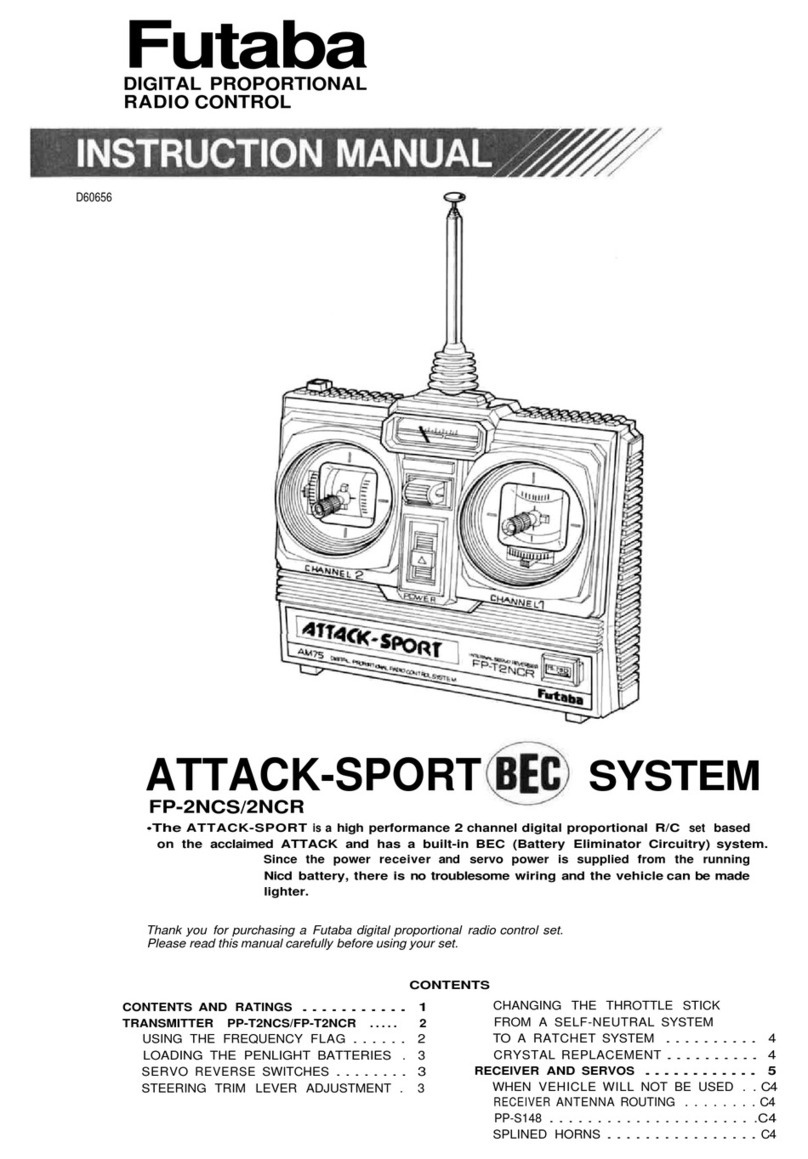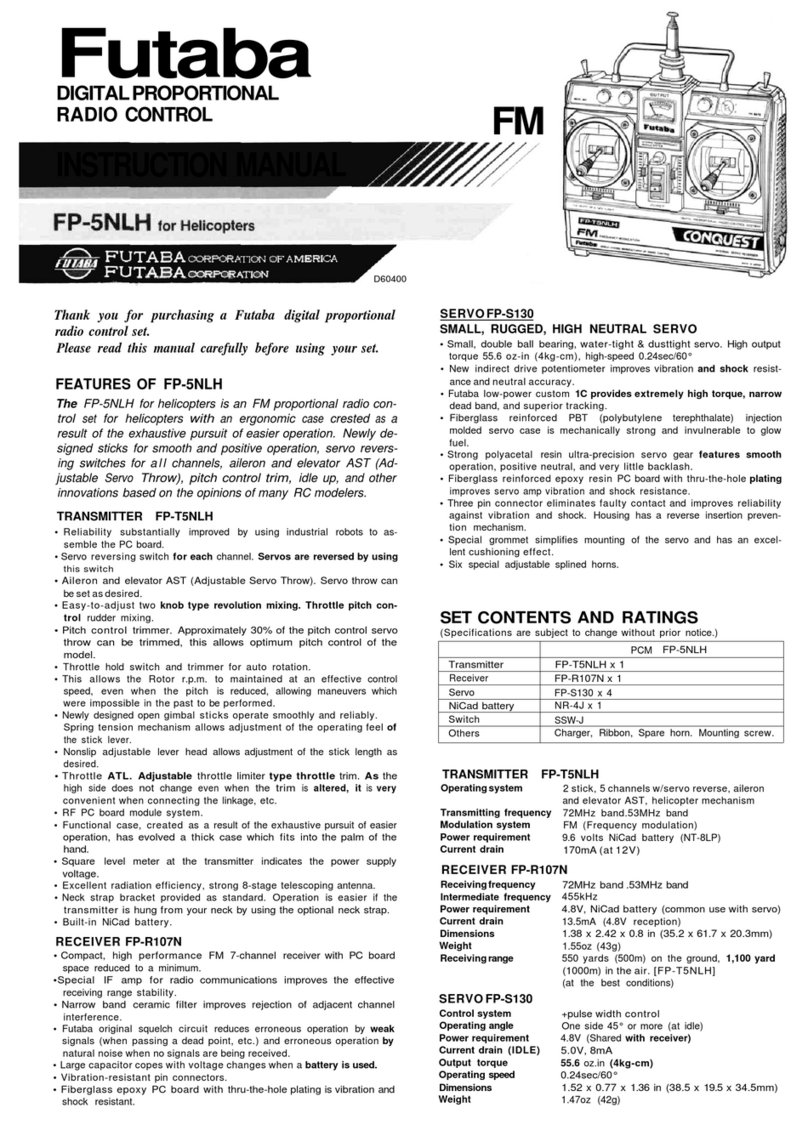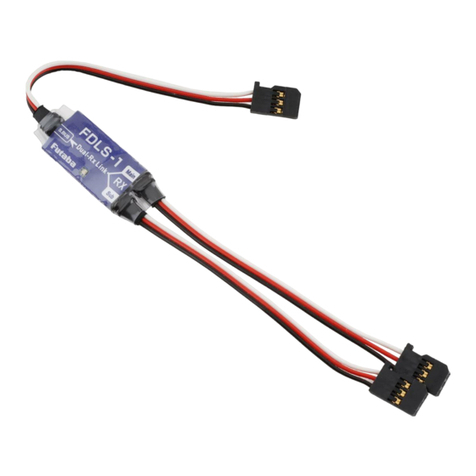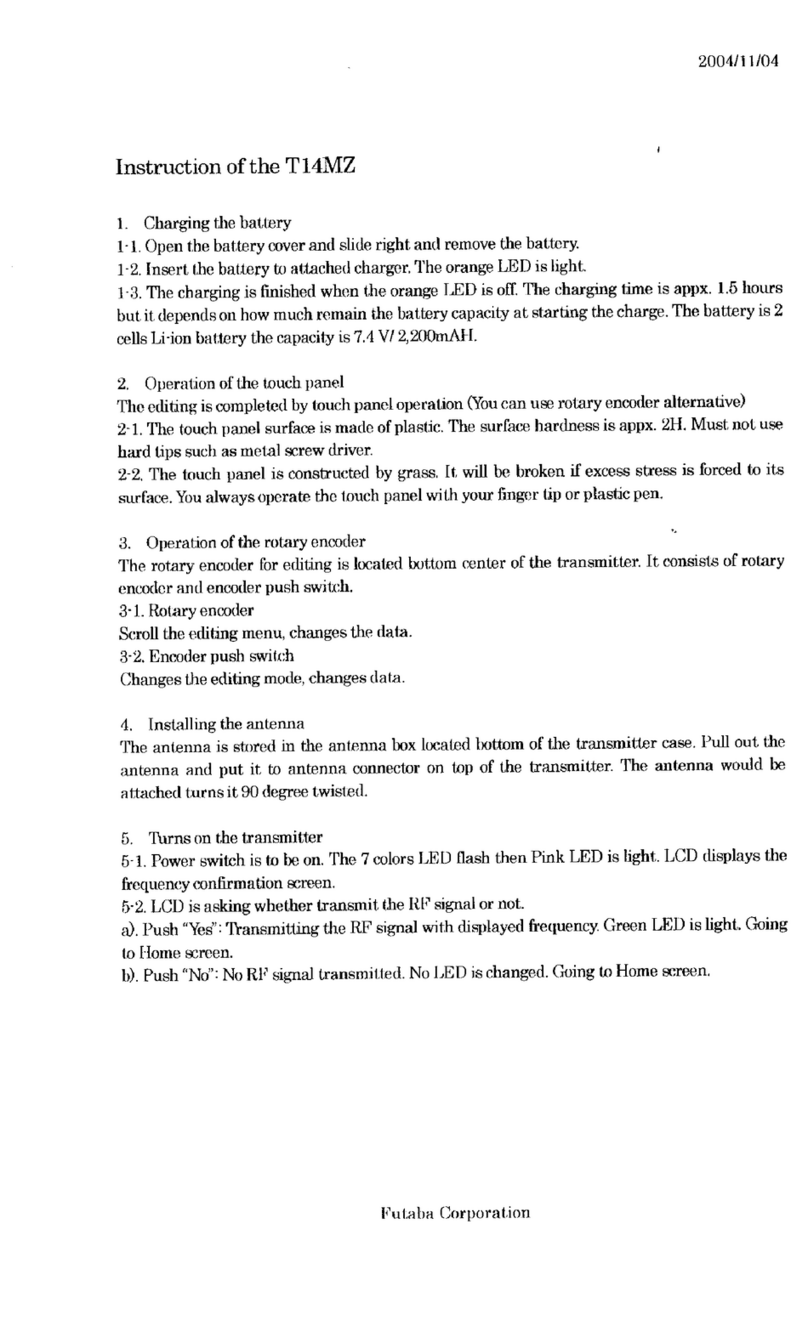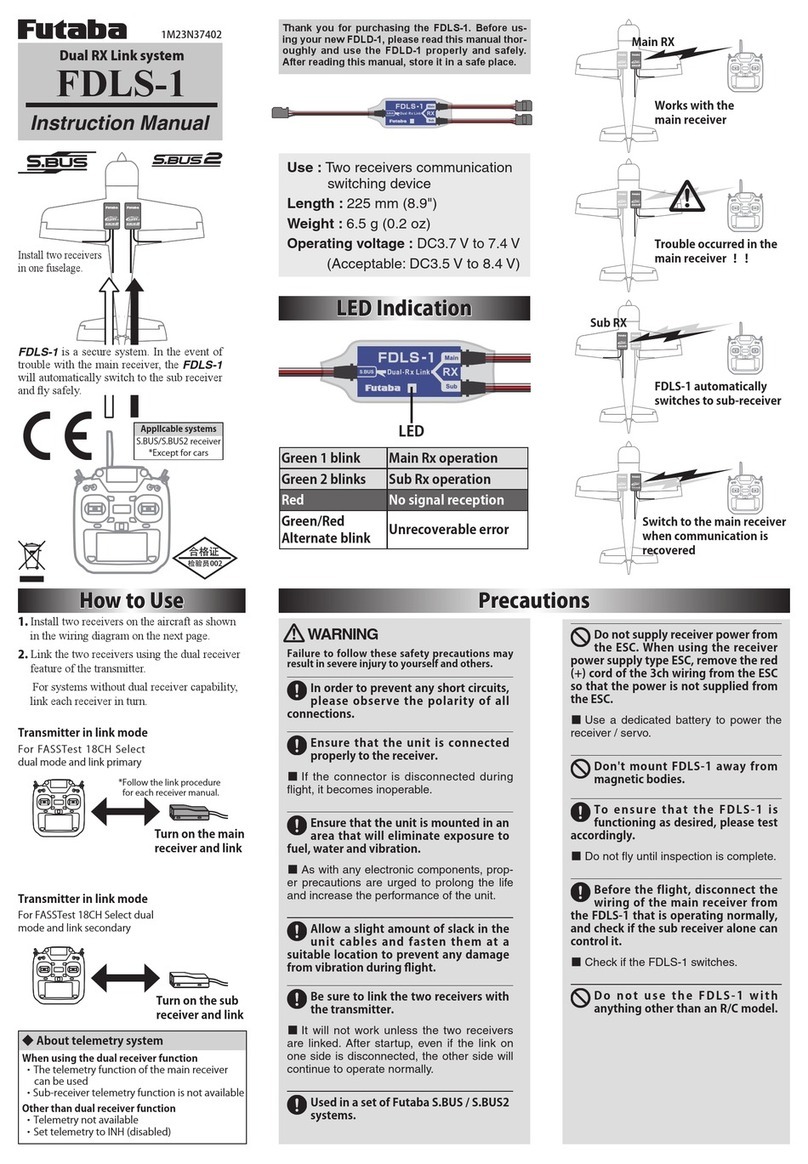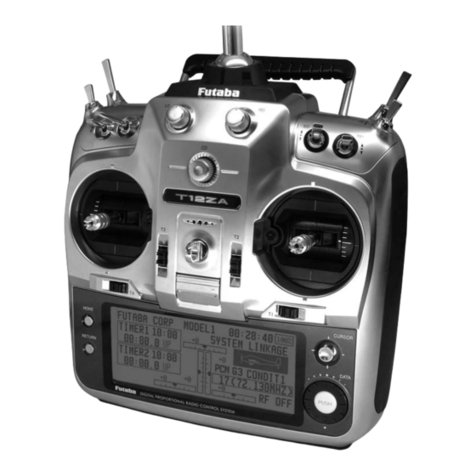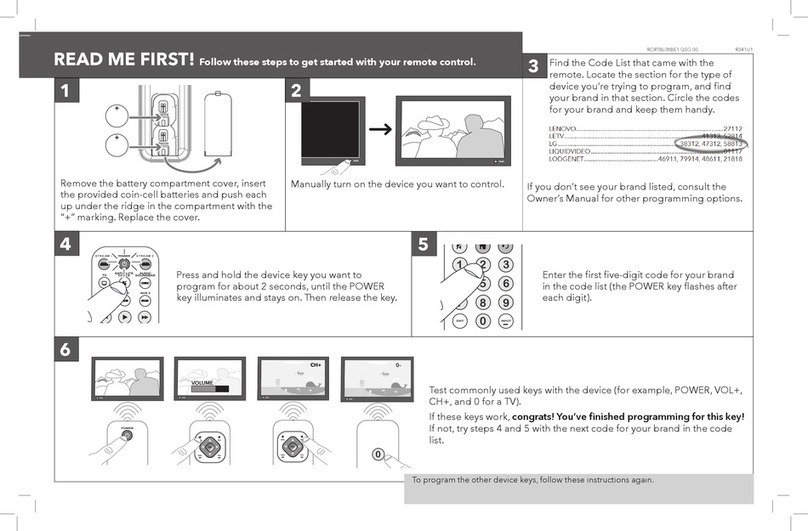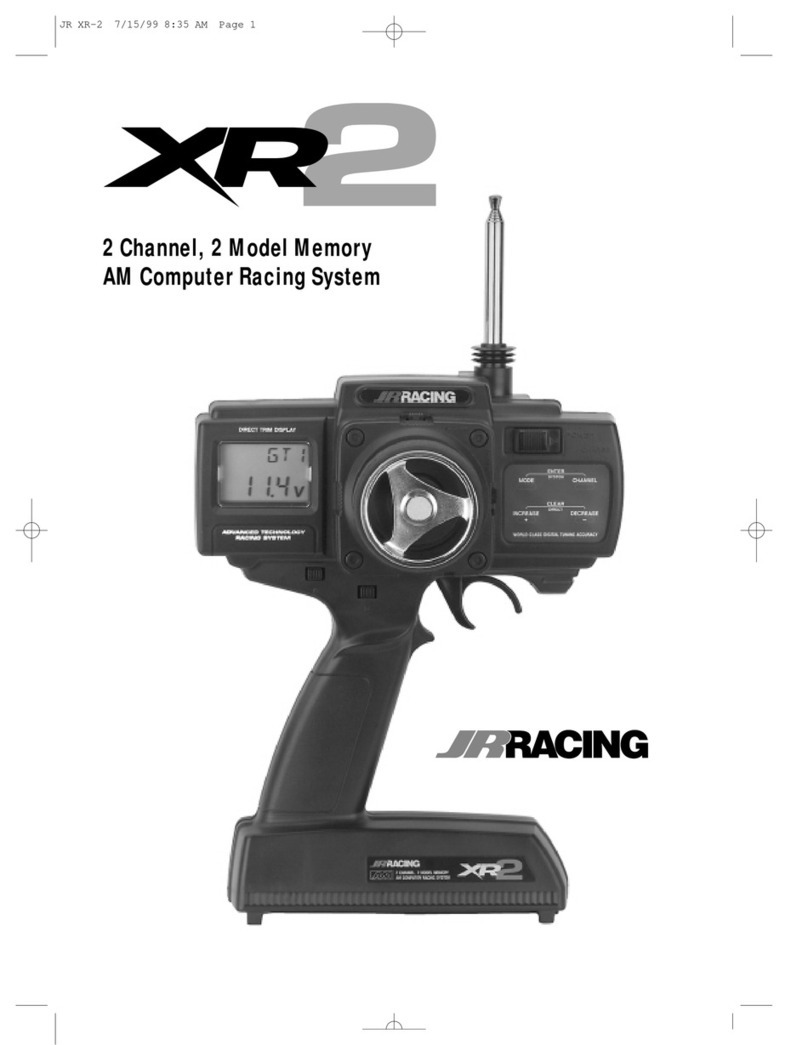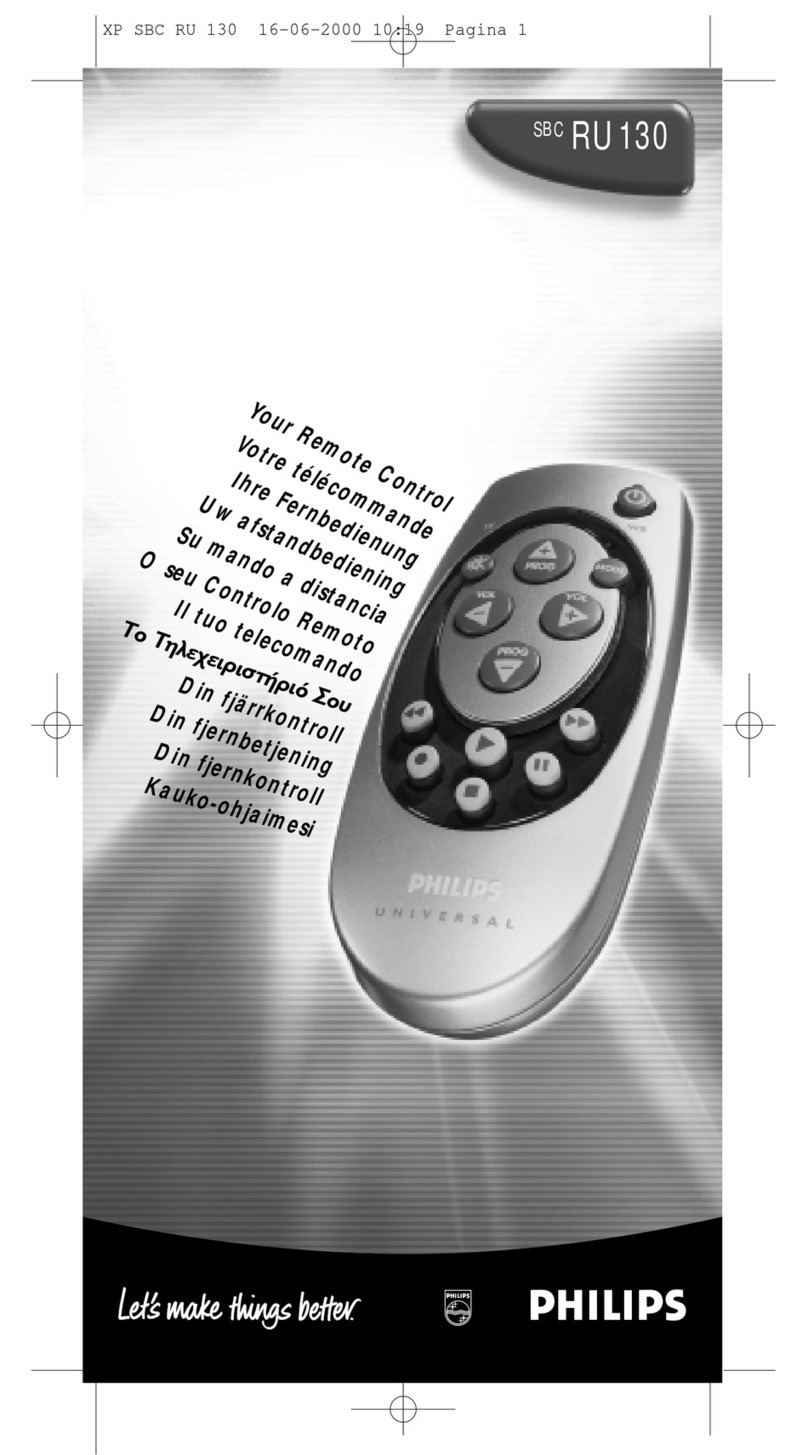•THROTTLE->RUDDER MIXING
ADJUSTMENT
The rudder neutralposition at engine SLOW
and engine HIGH depends on the engine
torque.When adjustedforstraightahead
when a common 2-cycleglow plug engine is
at HIGH,the boat willslowlyswerveto the
leftat SLOW and ifadjusted forstraight
ahead when the engine is at SLOW, the boat.
willslowlyswerveto theright at HIGH. Mix-
ingfromthrottleto rudder, thebiggest
featureof the Model FP-3EG, completely
eliminates this tendency.
The followingdescriptionis fora common 2-
cycleglow plug engine thatrotatescounter-
clockwise.Reversethedescriptionfora gasoline
engine, electricmotor, etc. that rotatesclock-
wise.
Thismixingis adjustedwiththemixing
trimmer and limit point trimmer at theleft
front of the transmitter.
Mixingtrimmer6 adjuststheamount and
directionofmovementofthe rudder servo
when the throttlestickis moved upand
down. The mixing amount is zeroat the
center position.
Limit point trimmer7 changes the point at
which theoperatinglineofthe mixing
amount totherudder servocurveswhen the
throttlestickismoved fromLOW toHIGH.
1When the throttlestickis set to HIGH, a
boat movingstraightat enginecontrol
SLOW willswerveto the right.On the
other hand, a boat moving straightahead
at throttleHIGH willswerveto theleft
when the throttlestickisset to SLOW.
That is, therudder servoshouldbe turned
tothe right when thethrottlestickisset
to SLOW.
2Turn the mixingtrimmer witha screw-
driverso thattherudder turnsslightlyto
the rightwhen thethrottlestick ismoved
fromHIGH to SLOW.
You should now have a good understanding
of throttletorudder mixing.
Throttle->rudder mixing will becalled
"MIX" hereafter.
3
•Run the boat without MIX (MIX trimmer
at center)and check therudder neutral,
play,and engine SLOW and HIGH.
•Limit point
Turn the trimmer about
2/3 clockwise.
(Inthe L to H direction.)
•Under
this
state,
turnthe MIXtrimmer
about halfwayinthe R (right)direction
and check the rudder movement (rudder
servo)whilemoving the throttlestickup
and down. The rudder shouldmovea little
to theright atSLOW and a little tothe left
at HIGH.
•Set
the
MIX
trimmer
to
zero (center) at
throttlestickHIGH. The rudder servo
should not move because themixing
amount is zero at throttle HIGH as shown
in
Fig. 11.
4Afterall preparations are complete, make
adjustments whileactuallyrunning.
AAdjusttherudder trimmerso thatthe
boat travelsstraightahead at throttle
HIGH.
BSet the throttle stick to SLOW. Ifthe
boat
swerves
to
the right
at
this
time,
the
MIXamount isexcessive.Reduce the
MIX amount by turningtheMIXtrimmer
toward the center.If the boat slowly
swerves to the left,the MIX amount is in-
sufficient.Increasethe MIX amount by
turningtheMIX trimmerinthe R direc-
tion.
CThis completes MIXadjustment at throt-
tle SLOW and HIGH. However,adjust-
ment near medium SLOW isstillneces-
sary.To adjustnear medium SLOW,
proceedas follows:
7

